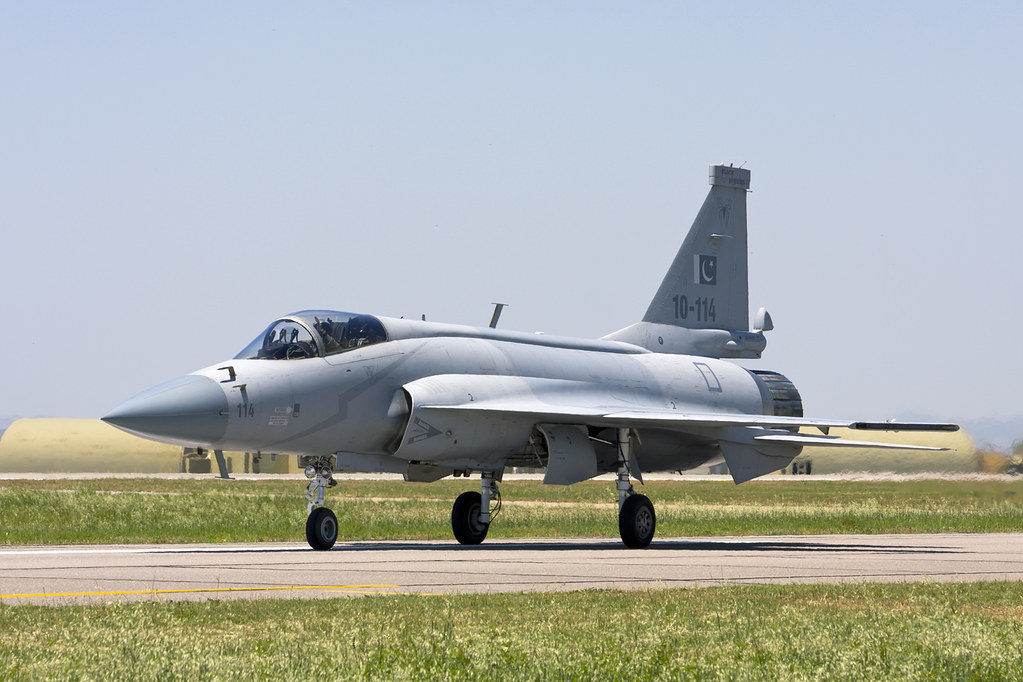
On September 25, Azerbaijani President Ilham Aliyev marked a significant advancement in his nation’s aerial capabilities with the reception of the first JF-17 Block III fighter jet at Heydar Aliyev International Airport. This state-of-the-art aircraft was assembled at the Pakistan Aeronautical Complex, an event attended by Vice Marshal Hakim Raza, who provided insights into the fighter’s specifications.
The JF-17 Block III, classified as a single-engine, multi-role combat aircraft, is engineered for versatile operational roles, encompassing both air-to-air and air-to-ground engagements. It is distinguished by its high maneuverability at low to medium altitudes and formidable firepower. Azerbaijan’s interest in acquiring this class of aircraft has been evident, with reports indicating a substantial $1.6 billion order for approximately 30 jets, significantly modernizing its frontline combat capabilities. This acquisition could pave the way for the retirement of its aging MiG-29 fleet.
In terms of regional defense dynamics, the introduction of the JF-17 Block III positions Azerbaijan with a competitive edge, as its neighbors primarily operate older fourth-generation platforms like the F-16 Block 52 and MiG-29A, which are equipped with outdated mechanically scanned radars and missile systems. Conversely, Armenia and Russia field more contemporary 4+ generation fighters such as the Su-30SM, featuring phased array radars, yet their missile capabilities do not match the JF-17’s advanced armaments, including the PL-10 and PL-15 missiles.
The JF-17 Block III is noted for its advanced active electronically scanned array radar and composite materials in its airframe, which enhance performance. While the Russian Su-57 offers comparable technology, it is only present in limited numbers. Despite its advancements, the JF-17 Block III may face challenges against Armenia’s Su-30SM fleet due to its smaller size and operational constraints, reminiscent of the Swedish Gripen’s classification in the ‘very light’ fighter category.
In a direct engagement scenario, the JF-17’s advantage lies in its advanced air-to-air missiles, particularly the PL-15, which surpasses the American AIM-120 and Russian R-77 in both range and sensor capabilities. Additionally, the PL-10’s off-boresight targeting capabilities are superior to those of Iranian and Turkish aircraft, which often lack modern helmet-mounted sights.
Operationally, the JF-17 Block III offers lower lifetime costs and maintenance demands compared to larger fighters like the Su-30SM, allowing for greater flight hours and enabling broader acquisition strategies. Its combination of cutting-edge technology, superior avionics, and advanced armament makes it an attractive option for export, likely eclipsing earlier versions of the JF-17.
The JF-17 has also played a crucial role in modernizing Pakistan’s Air Force, facilitating the replacement of older aircraft like the Mirage III and J-7, without a significant reduction in fleet size. Reports from Turkish Century Defense magazine indicate that Azerbaijan’s JF-17-C Block III Thunder jets will be equipped with Turkish-made Merlin IR and Peregrine BVRAAM missiles, bolstering their combat efficacy. This enhancement results from deepening defense collaboration between Turkey and Pakistan, particularly in missile technology, highlighting a pivotal advancement in their bilateral defense relations.
Azerbaijan’s procurement of 24 JF-17-C Block III fighters, expected to be completed by the end of 2027, will substantially improve the operational capabilities and confidence of Azerbaijani pilots, further solidifying the nation’s position within the regional power dynamics.




